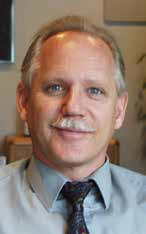Empowering Millennials For Workforce Success


Buddy Pine, a.k.a. IncrediBoy/Syndrome, is a very smart, yet troubled kid. In the 2004 animated movie The Incredibles, young Buddy wants to be a superhero more than anything else, and he challenges the superhero Mr. Incredible to take him on as a sidekick, to which Mr. Incredible simply replies, “I work alone.” This casual adult dismissal sends Buddy on his way to becoming a supervillain and when, as Syndrome, he finally catches Mr. Incredible in his zero-point energy ray forcing Mr. Incredible to apologize, Buddy lays it on the line: “See, now you respect me because I’m a threat.” It’s pretty clear Buddy is a troubled millennial who has fantastic new tools at his disposal and questionable ethics that together challenge the establishment in a bad way.
As I overheard in a conversation regarding millennials at a recent business conference, “It’s not all their fault.” There’s truth here, because while Buddy is beyond redemption, Mr. Incredible learns a tough lesson about a new generation of powerful tools, of a different cultural ethos, and how things are rapidly moving away from his existing skill sets. This generational relationship challenge, riding on misunderstanding, hubris, power, and fear, is front and center not only in a movie script, but in our real world.
In his trim book Under the Social Influence, NSCA director Chuck Wilson offers advice young Buddy could have utilized to perhaps find a better direction and create a more positive outlet for his passions and wickedly genius ideas. Mr. Incredible could have benefitted as well, by learning how Buddy’s situation was not just about being an unfathomable kid, but a deeply dividing cross-generational misunderstanding requiring an honest, ongoing, bidirectional conversation to resolve.
As an industry consultant and mentor who talks to dozens of companies every year about myriad challenges facing our industry, Wilson has witnessed much of this divide and how business owners and managers struggle to overcome it—including in his own organization, where his hiring profile leans heavily on finding bright and capable younger employees who are coachable and can excel with proper guidance. The subject of how to balance the previously successful needs and mindset of established business managers with the rapidly evolving dynamics of a growing digital-age workforce runs deep.
I spoke with Wilson about his book and why he felt the need to write it: “I had the benefit of great mentors and wanted to give back,” he said. “Young people entering the workforce today are incredibly gifted, more educated, well informed, and worldly; yet being ‘digitally native,’ they may feel that just having technical competence is enough. Culture is everything in business, and I want to help bring situational awareness into focus for them: how to present themselves, how to communicate effectively, and how to leave certain bad habits behind. Real effort paves the way, and the best leaders are coaches.” Mr. Incredible could have avoided some serious pain if he’d approached Buddy more like this.

ISTOCK/THINKSTOCK
The key, in Wilson’s view, is in building an ironclad, bulletproof belief system—a kind of superhero’s ethos—first within the individual, and then by extension into the workplace. “Too many companies try to paint a rosy picture of work life that really doesn’t exist over time,” he said. “You can’t guess at what your culture is, and many companies are too quick to hire. Thoughtful onboarding of new employees and a personal development plan are so important, but the message needs to be communicated properly; you need to be careful in not allowing job function training to become improper corporate culture training. I may not know what’s 100-percent right in this, but I have seen what’s wrong, and lecturing from management on culture or allowing employees with their own agenda to train culture can be a big problem.”
A daily selection of the top stories for AV integrators, resellers and consultants. Sign up below.
The next generation will listen to a properly coded message, and they will bring unprecedented openness of thought, fantastic ideas, and their super weapons to the table—if the message from entrenched leadership incorporates their worldview, along with patient mentoring about the real world and how it actually works when the screens go dark.
Steve Olszewski (steveo@dimensional.net) is vice president of Dimensional Communications and Stealth Acoustics, a systems integration firm and speaker manufacturer in the Seattle area.
Wilson’s Wisdom
Chuck Wilson has developed a multi-question review matrix and scoring system to determine the best employees over the long-term, especially with an eye to continuity of the business beyond the current leadership. Here are some of his words and advice:
Here’s my succession plan criteria, which also works to evaluate the next person up:
- * Who learns quickly?
- * Who is best in front of the client and is naturally people-oriented?
- * Who is willing to both initiate and manage change?
- * Who thinks strategically and can produce an executable plan?
- * Who can develop peers and employees?
- * Who can coach and mentor?
- * Whom do I believe in most?
- * Who gladly accepts responsibility?
- * Who is best at being held accountable?
I score these nine things 1-4 and multiply the next series of questions by two.
* Which of the candidates is the best fit with our established culture based on the following:
* Who do I feel really wants to be here and has the most passion for what we do?
* Whom can I really trust?
* Who will get their work done and produce results while staying true to our non-negotiable values?
I then eliminate all BBHPs (bad behavior-high performers) and decide if we can fix the bad people skills (unlikely). Finally, eliminate whoever just doesn’t have the right skills or experiences based on the actual job they seek.
